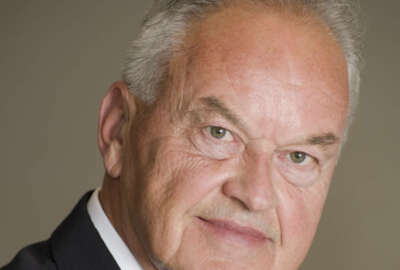
Thrift Savings Plan’s fast growing millionaire club
The TSP has almost 3,300 people with account balances of $1 million or more. There are 418 regular rank-and-file feds who have million dollar accounts by steadily...
Mike Causey is taking the day off. This story was published previously.
What has more than 50 million toes, is found in all parts of the world (except for North Korea) but heavily concentrated in California, Texas, Florida, Maryland, Virginia and the District of Columbia?
The answer, the almost 5 million people — active, retired or their survivors — who are in the federal Thrift Savings Plan. The TSP is the biggest — and many financial pros say the best — company-sponsored 401k plan ever.
The TSP has almost 3,300 people with account balances of $1 million or more. Many of them are federal judges who were highly-paid attorneys before joining Uncle Sam. They brought their outside retirement accounts with them and into the TSP because its lowest-in-the-business administrative fees, among other things.
Despite that outside money coming into the TSP there are 418 regular rank-and-file feds who also have million dollar accounts. They did it the old-fashioned way: By steadily investing. All told, there are 48,000 feds who have been investing since the TSP was launched in the late 1980s.
One of the TSP millionaires has a $4.7 million balance in his or her account.
Are you wondering where you are in the TSP lineup?
- There are 2.8 million people whose balances are $50,000 or less.
- More than 1.4 million investors have accounts worth between $50,000 and $249,000.
- *Slightly more than 371,000 current and former account holders have Tsp BALANCES BETWEEN $25,000 AND $499,000.
- Just over 92,000 have balances of between half a million and $749,000.
- Almost 19,000 individuals (18,846 to be exact) have balances between $750,000 and $999,000.
- At the top are the 3,272 (as of January 2016) with accounts worth more than $1 million, including the $4.7 million man or woman.
- The FERS participation rate for the TSP has held steady at 89.3 percent.
Having a TSP balance is a very nice addition to the retirement nest egg for career feds under the old, more generous CSRS program. They get pensions linked to inflation beginning as soon as they retire. Many won’t need to tap into their TSP accounts for years. Some never do, except to make required minimum distributions at age 70.5. For FERS employees its another story. The TSP isn’t a luxury. It is a must.
Because of their less generous federal annuities, FERS employees will depend on three things when they retire: The FERS benefit where inflation protection doesn’t begin until age 62, Social Security and their TSP accounts.
FERS employees are eligible for a total five percent match to their accounts from Uncle Sam. People who don’t invest at least five percent to get that match are walking away from the equivalent of a five percent, tax-deferred pay raise each year.
It has been estimated that the TSP will account for 30 to 50 percent of what FERS retirees have to spend in retirement. Those who don’t invest may have a tough time in retirement unless they are independently wealthy, hit the lottery or don’t live very long, because over time inflation could eat into their government pensions which are based on a diet-COLA (cost of living adjustment) formula.
If you are investing as much as you can in the TSP (at least enough to get the five percent money match), congratulations. That’s how millionaires are made. If you aren’t, Plan B might be that you will never retire.
Nearly Useless Factoid
The nickname “Uncle Sam” can be traced back to Samuel Wilson, who supplied barrels of beef to soldiers during the War of 1812. He would mark the barrels “U.S.” to represent “United States,” but soldiers began refering to them as “Uncle Sam’s.” A local paper popularized the moniker and it became a synonymous with the U.S. government.
Source: History.com
Copyright © 2025 Federal News Network. All rights reserved. This website is not intended for users located within the European Economic Area.
Mike Causey is senior correspondent for Federal News Network and writes his daily Federal Report column on federal employees’ pay, benefits and retirement.
Follow @mcauseyWFED





